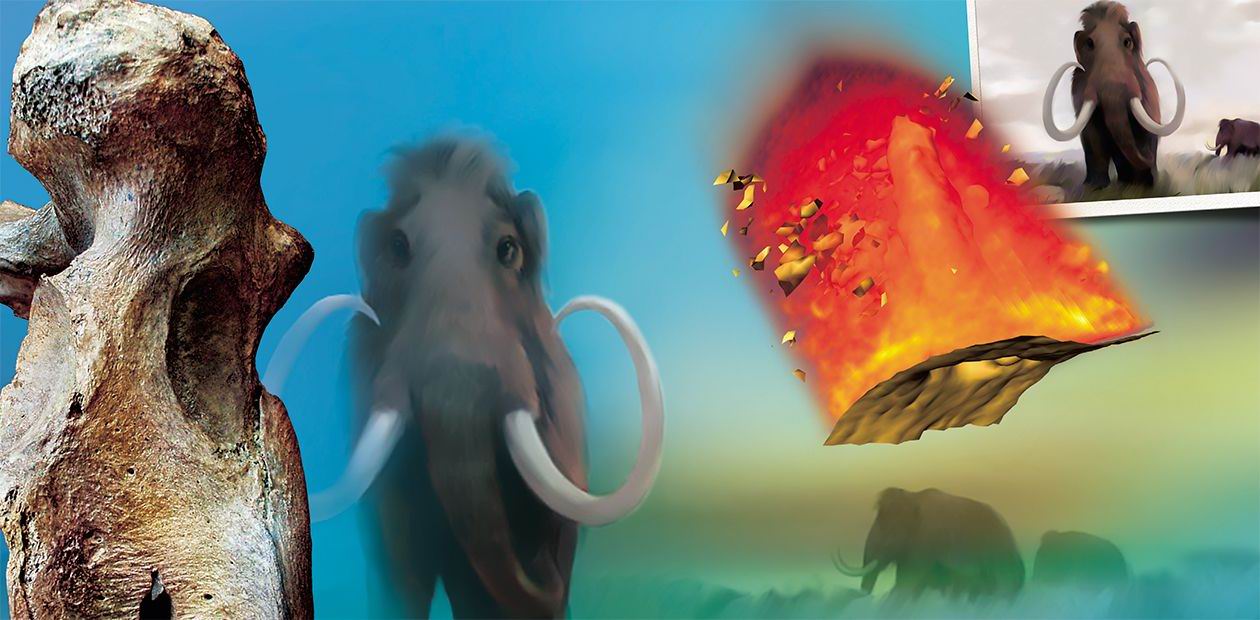The Mammoth Hunters
Natural traps (quicksands) attracted the attention of Stone Age hunters with the possibility of easy prey. One such ancient trap, which is the combination of the bottom sediments of a small creek and of a salt-lick, lies near Khanty-Mansiisk and is the greatest “cemetery” of mammoths in Western Siberia
It was here that in 2002 researchers found the northernmost Paleolithic site in the region, which “functioned” approximately from sixteen to thirteen thousand years ago. Numerous stone tools and, above all, a mammoth vertebra, pierced with a spearhead, were collected there. This is the first find of such kind in Siberia and the second in the world.
The stone blades of the spearhead got stuck in this bone, in a twenty-three millimeters deep cone-shaped breach. According to the radiocarbon method, the find is thirteen and a half thousand years old. The study of it generated a number of questions related to the reconstruction of the very process of hunting for such big animals as mammoths. It was necessary to determine the character of the wound, to detect the depth of the perforation and the direction of the blow without destroying the vertebra.
The tomographic research of the vertebra was carried out at the Budker Institute of Nuclear Physics of the Siberian Branch of the Russian Academy of Sciences. The researchers were able to “look” inside the perforation, to see three-dimensional pictures of the two stuck stone bladelets and bone tissue consolidations around the perforation, and to make the necessary measurements. The results of this innovative work will make it possible to determine the energy of the blow and its trajectory as well as to evaluate the distance between the hunter and the most grandiose prey of the Paleolithic Age.
Ph. D. in History Vassily Zenin, the Institute of Archeology and Ethnography of SB RAS (Novosibirsk)









